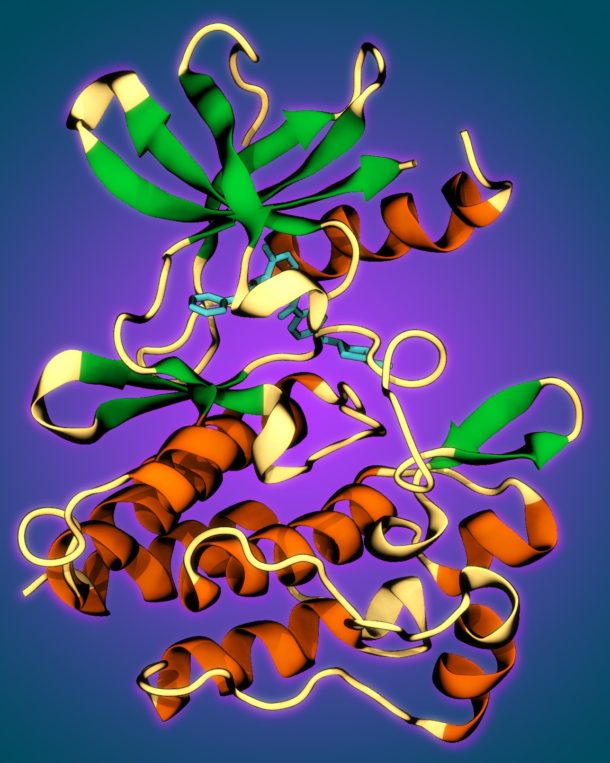Guest post by Sonya Hanson, postdoc in the Chodera lab.
(Project 10472)
We’re working our way through the kinase family here at the Chodera lab. You may have seen Danny’s post about EGFR earlier this year, and now we’ve started simulations of Abl kinase. Abl kinase has a special place in the history of cancer therapeutics, ‘dispelling the long-held myth that it was not feasible to develop selective inhibitors of key cell-signaling molecules as safe and effective medicines.’ Novartis’ development of the drug imatinib (or Gleevec commercially) to treat chronic myelogenous leukemia (CML) specifically targets a mutant Abl kinase that results from a chromosomal abnormality called ‘the Philadelphia chromosome’. There is even a book out recently that chronicles the development of Gleevec (The Philadelphia Chromosome).
While the success of imatinib was remarkable, many patients develop resistance to it and regress. A more recent drug targeting Abl kinase, ponatinib of Ariad Pharmaceuticals (Iclusig commercially), has been developed that overcomes some of these resistance mutations. However, now even ponatinib has been found to be susceptible to resistance mutants. With these simulations of Abl kinase, we are hoping to begin to understand a structural basis for the development of resistance mutants so we can develop drugs that anticipate and overcome them before the patient even has to experience regression. But to do this we will need many long timescale trajectories of Abl and later its mutants to achieve this deeper understanding of the development of resistance in CML. Additionally, this knowledge could inform models of resistance development in other cancers that result from kinase mutations or kinase up-regulation.

